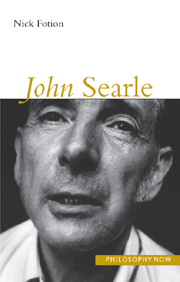4 - Metaphor and fiction
from Part I - Philosophy of language
Summary
Metaphor
Searle's main interest in metaphor is in how it works. Once we answer that question, he thinks we can answer other questions more readily such as “What is metaphor?” and “Why do we use it?” He begins his discussion by telling us that metaphor is still another type of linguistic use where sentence and speaker meaning come apart. In so far as he begins this way, he is opposed to anyone who tries to understand metaphor by working solely with sentence meaning. It might be thought, for example, that a metaphorical sentence is ambiguous. On this account the sentence uttered has both literal meaning and metaphorical meaning. The job of the hearer is to detect the ambiguity, and then realize somehow that the speaker intends for the hearer to focus on the metaphorical side of the ambiguity. Having focused properly, the hearer's job then becomes to decipher somehow what the metaphor is telling us.
In opposition to this interpretation, Searle argues that there is no ambiguity when we use metaphor. When, after watching Sam eat at the dinner table, one of guests says “Sam is a pig”, she is not speaking ambiguously. “Pig” means pig and “Sam” refers to Sam and, further, there is no ambiguity in “is” or “a”. Nor is there any ambiguity in “Sam is a pig” as a whole. The sentence uttered means what it says. But as hearers we realize that there is a disjoint between what was said and what presumably the speaker meant to say. Sam after all doesn't look or smell like a pig.
- Type
- Chapter
- Information
- John Searle , pp. 75 - 96Publisher: Acumen PublishingPrint publication year: 2000



